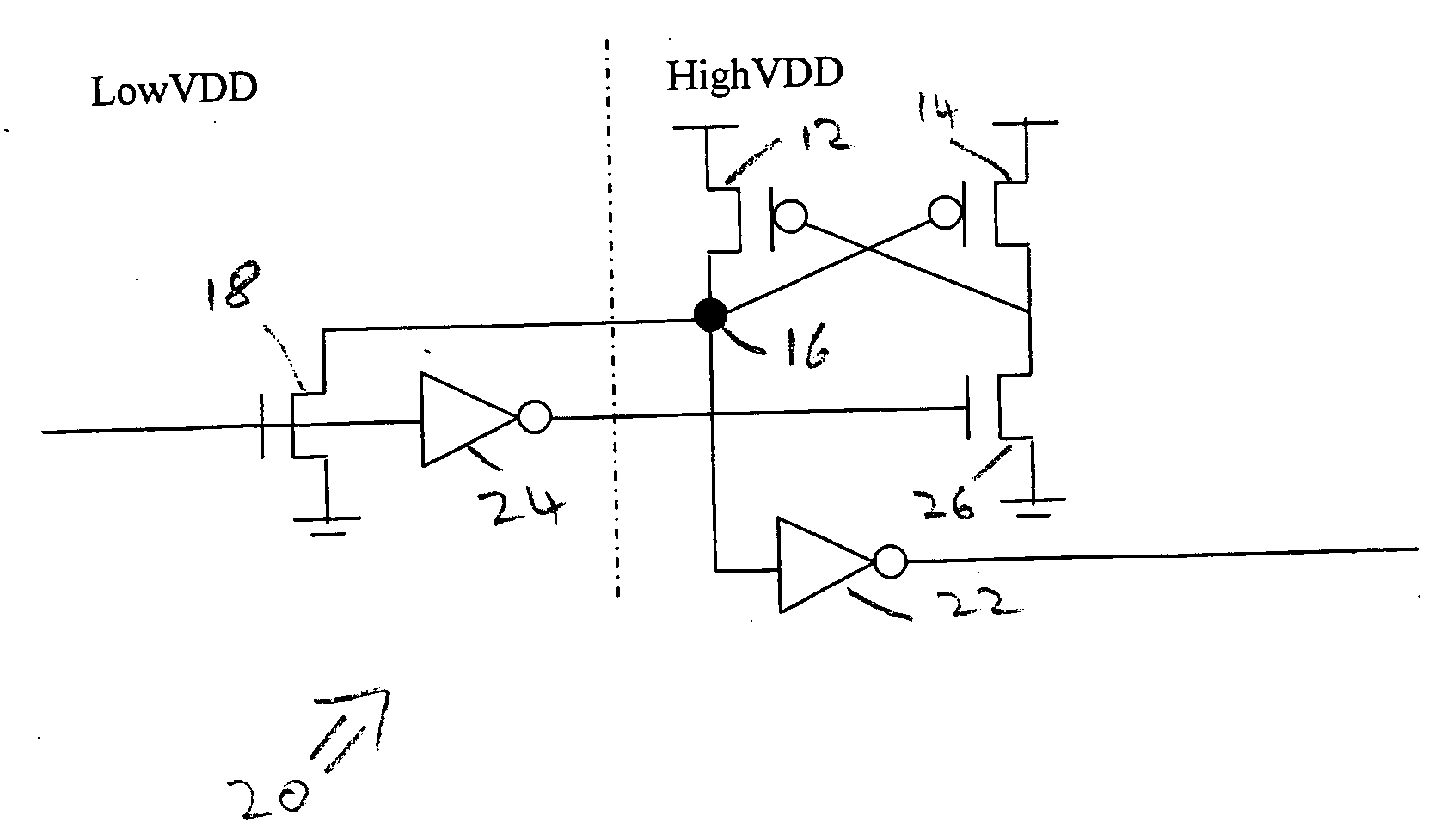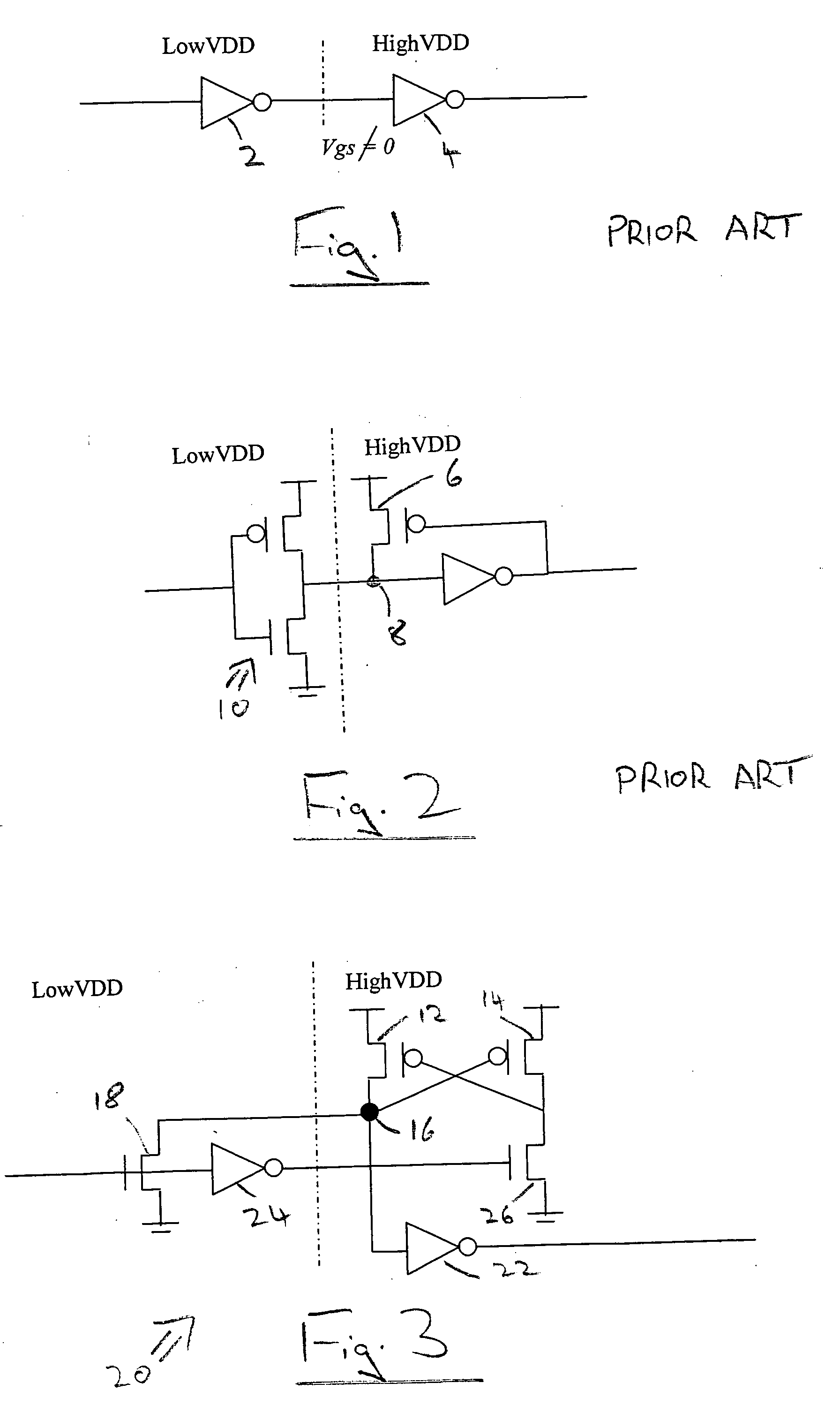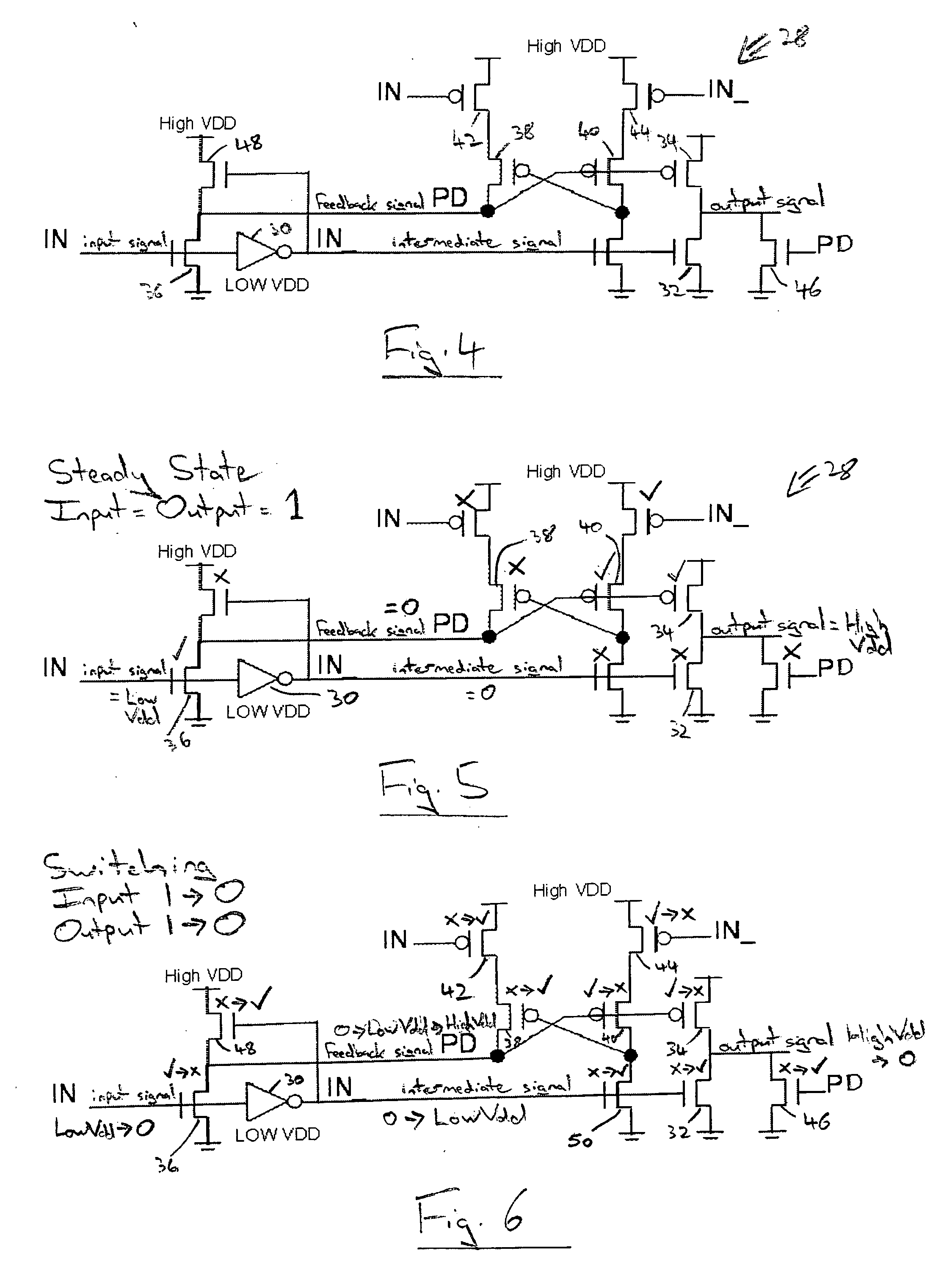Level shifter for use between voltage domains
- Summary
- Abstract
- Description
- Claims
- Application Information
AI Technical Summary
Benefits of technology
Problems solved by technology
Method used
Image
Examples
Embodiment Construction
[0049]FIG. 4 shows a level shifter circuit 28 comprising a first buffer circuit in the form of an inverter 30 and a second buffer circuit in the form of a transistor stack comprising transistors 32 and 34. An input signal is applied in parallel to the inputs of an NMOS transistor 36 and the inverter 30. The NMOS transistor 36 serves as a feedback signal initiating transistor. Cross-coupled PMOS transistors 38 and 40 serve as a feedback circuit. Supply interrupting transistors 42 and 44 serve to temporarily interrupt the power supply to the cross-coupled PMOS transistors 38 and 40 in response to the input signal and the inverted input signal respectively, and output boost transistor 46, comprising an NMOS transistor switched by the feedback signal, is coupled to the NMOS transistor 32 of the second buffer circuit and serves to increase the speed at which the output signal falls to a “0” (ground / common voltage level) when the input signal is changed from a “1” to a “0”.
[0050]Within th...
PUM
 Login to View More
Login to View More Abstract
Description
Claims
Application Information
 Login to View More
Login to View More - R&D
- Intellectual Property
- Life Sciences
- Materials
- Tech Scout
- Unparalleled Data Quality
- Higher Quality Content
- 60% Fewer Hallucinations
Browse by: Latest US Patents, China's latest patents, Technical Efficacy Thesaurus, Application Domain, Technology Topic, Popular Technical Reports.
© 2025 PatSnap. All rights reserved.Legal|Privacy policy|Modern Slavery Act Transparency Statement|Sitemap|About US| Contact US: help@patsnap.com



